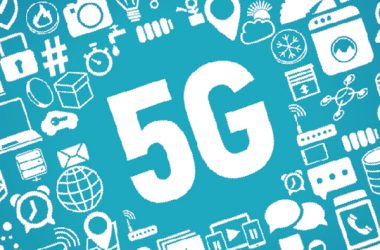
The tech world and those with an avid interest in the future of the digital economy continue to wait with bated breath for the rise of the Internet of Things (IoT) within the Middle East. It’s a vision that has been championed by both the public and private sector – born out of a vision where the real and digital worlds converge.
The value proposition for both the ICT community and the wider economy is clear. The rise of high-speed Internet has already significantly changed the way certain industries work. The media world, for example, has greatly benefitted from the ability to harvest, share and host data – making it easier to bring together and seed content from mobile to the world.
Many people not directly involved in the ICT industry are also pondering when this vision will come to life. It’s a fair question; more so because of IoT’s serious business implications. For example, many believe that it is going to be telecom operators’ main source of revenue within the next 10 years. Everything from cars to medical devices will be connected and linked through mobile networks as experts predict over 30 billion IoT connections will be established by 2025. While experts predict that the market value of IoT could reach $1.6 trillion by this time, the revenue opportunities for operators – like many organisations – will closely depend on their positioning for their M2M end-to-end offering, including business model and technology used.
Removing the limitations
The foundation for IoT business models and technical operations starts with M2M. In order to truly realise the vision of IoT, M2M capabilities must become an industry priority in the Middle East and further abroad.
That being said, there seems to be confusion surrounding where M2M ends and where IoT begins. Let’s clear this up. The Internet of Things can be understood as a much broader concept than M2M. Generally speaking, M2M could be considered a subset of IoT. M2M is like a line connecting 2 points, and IoT is like a network, a system composed of lots of M2M and triggering lots of interactions/activities.
Simply, M2M is when data is transferred from one machine to another. On the other hand, IoT encompasses the interaction between everything, through some means of digital communication. For example, when an employee uses their entrance card, the door is unlocked when the security detector receives the ID key from the employee card – this is M2M. How IoT differs is that when the employee enters the office, the system recognises the person and adjusts light settings, turns on the air conditioning and starts re-booting their computer before they have reached their desk.
So let’s focus on M2M for now. In reality, these machines will actually be trafficking data to a central platform through which all devices are connected over mobile. Of course with any technology innovation, there are challenges that must be overcome. The conservative pace of IoT development in many industries is in part due to the fact that M2M communications need to be implemented and integrated between the device, the Internet and the end user. This is where the challenges arise, and now is the time for the industry to pull together and really concentrate on filling the gaps hindering the growth of this new era.
As a start, we need to recognise that GSM systems have limited ability in terms of number of connections, and that this needs to be increased. Likewise the current GSM/GPRS mobile systems cannot guarantee coverage across 100% of environments, such as underground areas, indoor spaces, and so on. There are also limitations on technologies that use unlicensed spectrums. For example, communication security that is essential to M2M applications for banking cannot be guaranteed over unlicensed spectrum. Unlicensed spectrum also causes interferences, which reduces the reliability of communications and ultimately impacts the end user experience.
An Optimistic Future
Despite some of the aforementioned challenges, businesses in the Middle East – including the ICT sector – have every reason to be optimistic about the future of M2M.
The current phase of M2M deployments are addressing efficiency enhancements and cost reductions for business systems. Likewise technological advances in the Low Power Wide Area (LPWA) market will help drive down the cost of sensor communication over the coming years.
One of the most important and far-reaching M2M developments on the horizon is a new 4.5G specification developed specifically for machine connectivity called “LTE-M”. It is a new air interface technology designed to target the increasing number of connections and low-traffic M2M applications, such as smart meter, smart grid, children and pet tracking, smart parking, waste management, smoke detection, equipment supervision, etc.
LTE-M technology will enable single cell sites to connect up to 100,000 IoT devices per square km. By contrast, a current 4G cell can typically manage about 1,000 connections. Deeper coverage can also be achieved with 20dB compared to current GSM capabilities. The specification also enables machines to use less power, with an estimated 10 year battery life for many existing M2M devices.
Technologies such as this will be the enabler of the next great wave of connectivity. The standardisation for LTE-M is expected to be part of 3GPP Release 13, which will be frozen in the first quarter of 2016. While we expect LTE-M to be commercially ready by 2016, in true visionary fashion, operators in the Middle East are already planning to trial the technology by the end of this year. Smart meter solutions powered by LTE-M are ready for demo, and other vertical applications to follow.
The bottom line is that as more of these advanced M2M technologies come to fruition, more industries will begin to see direct benefits, transforming IoT and M2M from buzzwords to reality. Avoid observers may find themselves exhaling a sigh of relief sooner rather than later.





